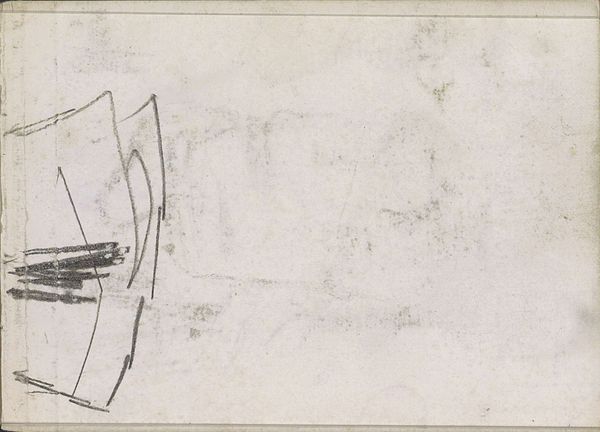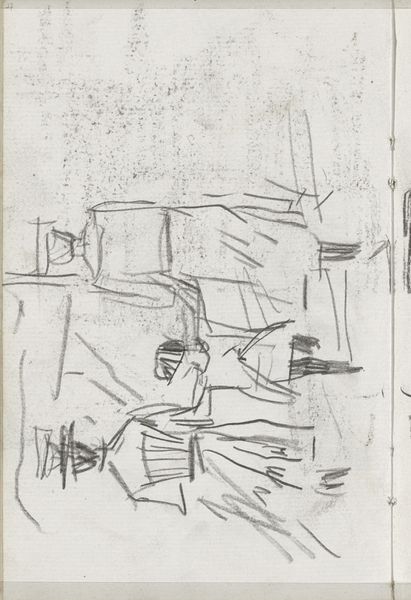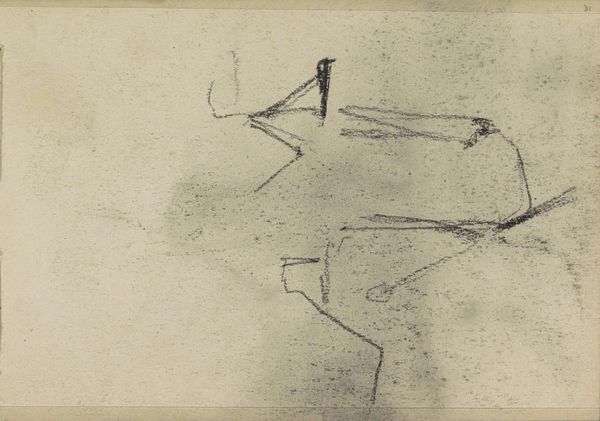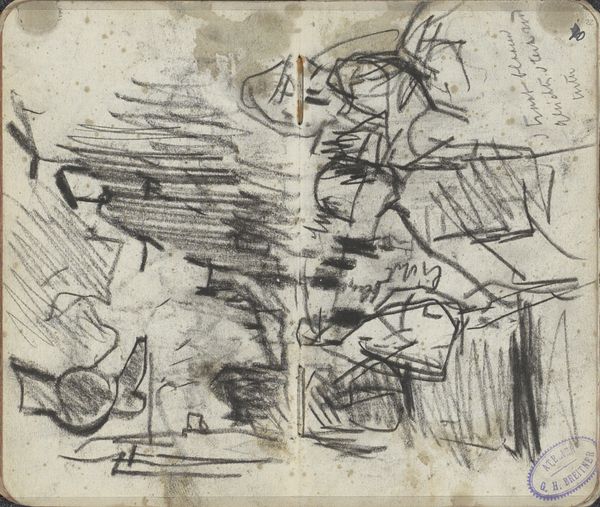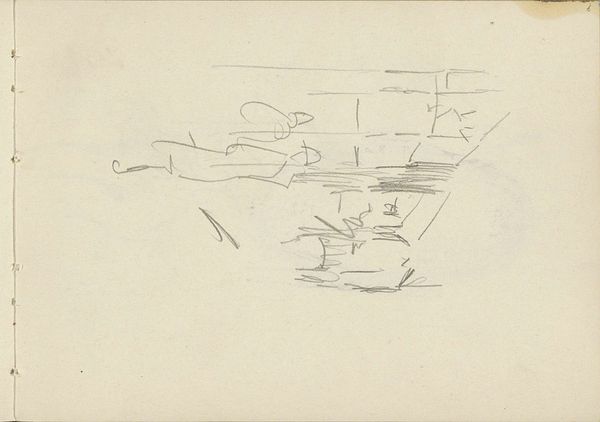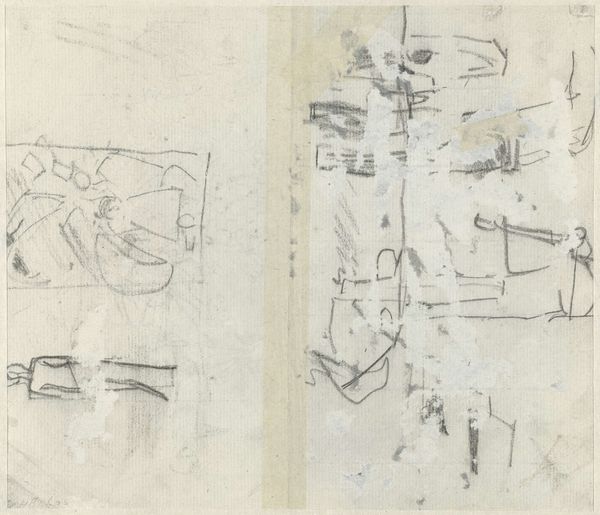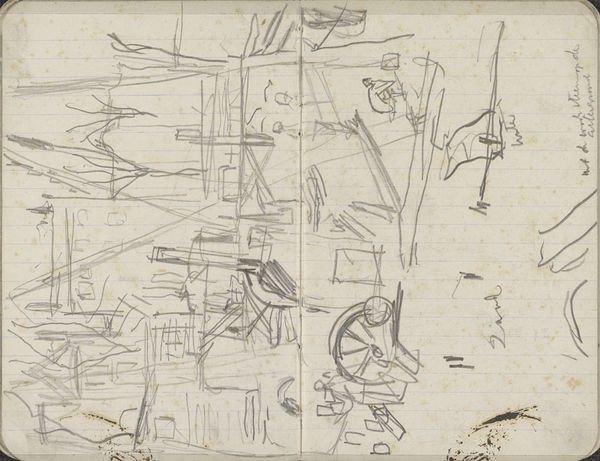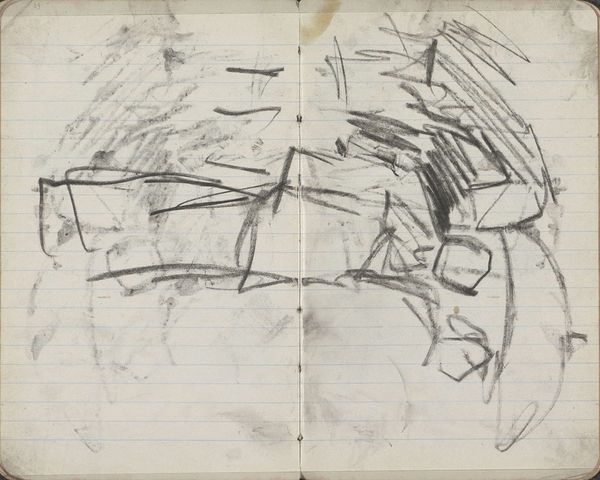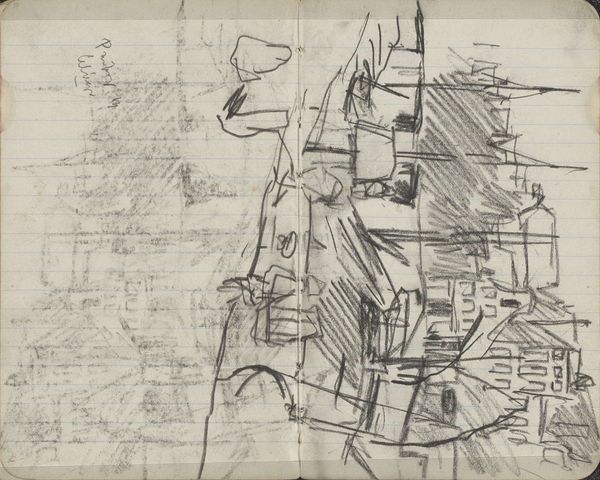
drawing, graphite
#
drawing
#
amateur sketch
#
aged paper
#
toned paper
#
sketched
#
incomplete sketchy
#
landscape
#
personal sketchbook
#
fading type
#
graphite
#
sketchbook drawing
#
quick sketch
#
sketchbook art
Copyright: Rijks Museum: Open Domain
Editor: Here we have Willem Witsen's "Studie, mogelijk van bebouwing," or "Study, possibly of Buildings," made around 1888 to 1891. It's a graphite drawing. It feels really ephemeral, like a fleeting impression. What strikes you about this sketch? Curator: I'm drawn to the immediacy of it, how the rapid lines capture a moment of urban development. Think about the late 19th century - massive shifts in urbanization were dramatically altering the social fabric, creating stark inequalities. This sketch, even if unintentional, reflects the disruption and impermanence felt by many. Who was being displaced in these rapid reconstructions and whose voices were not reflected? Editor: I hadn't thought about the social impact, I was more focused on the aesthetic. Curator: And that’s valid! But the personal is political. Consider how artists like Witsen were part of a changing social landscape. As new building projects transformed cities, it reflected both progress and immense disparities of power and dispossession. Who owned this land before? Who decided what should be built, and for whom? These hasty strokes hint at the many histories often erased by progress. Editor: So you're saying we should consider the context, even in a simple sketch. How the push for the modern could silence voices? Curator: Exactly. This piece becomes more than just lines on paper; it’s a subtle commentary of that period’s socioeconomic tensions. What appears to be an innocent study might really be hinting at questions of property, agency and visibility in society. Editor: I guess there’s more to a quick sketch than meets the eye. I’ll be sure to think critically about what isn't immediately apparent going forward. Curator: Indeed. Keep digging and stay curious!
Comments
No comments
Be the first to comment and join the conversation on the ultimate creative platform.
